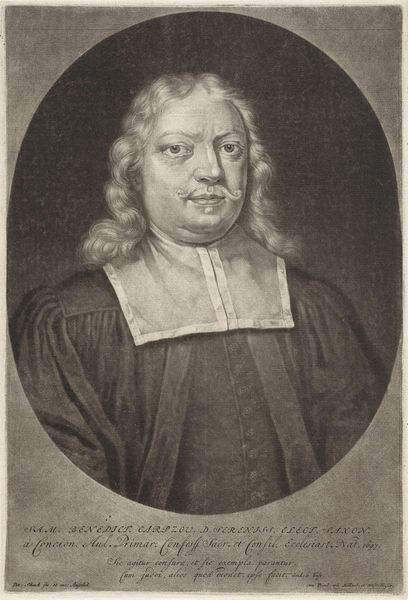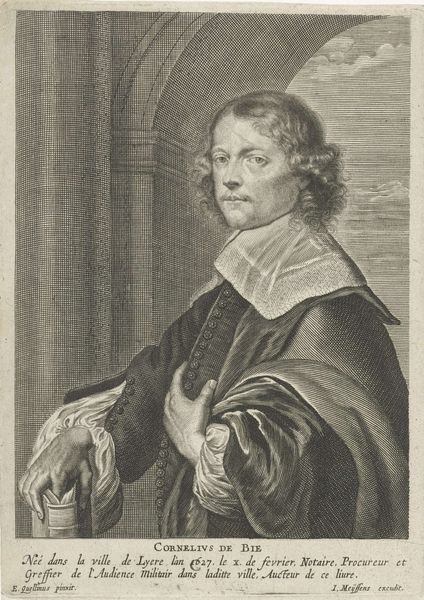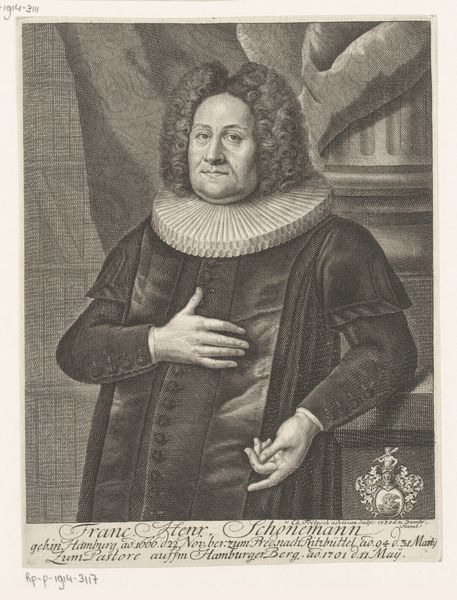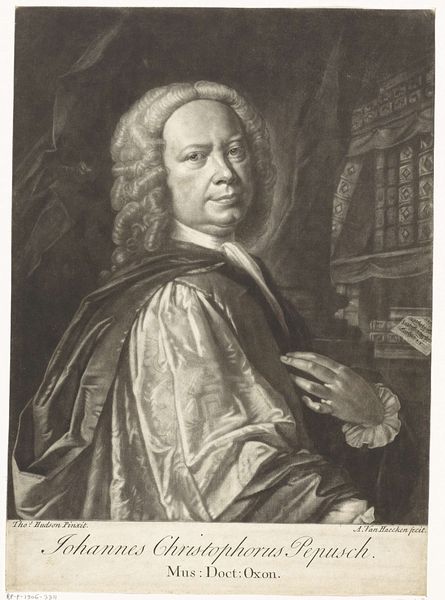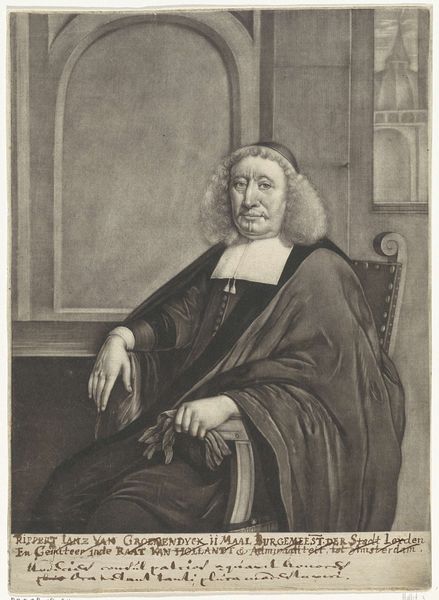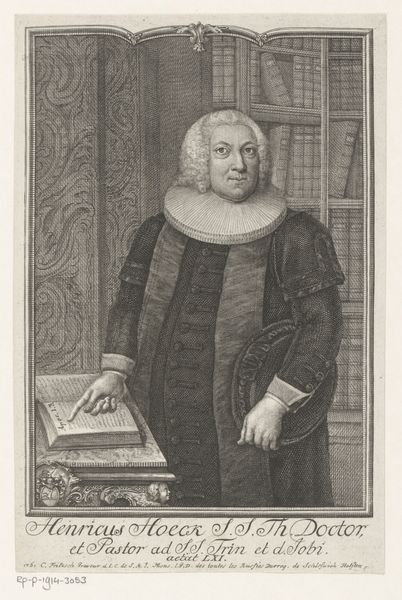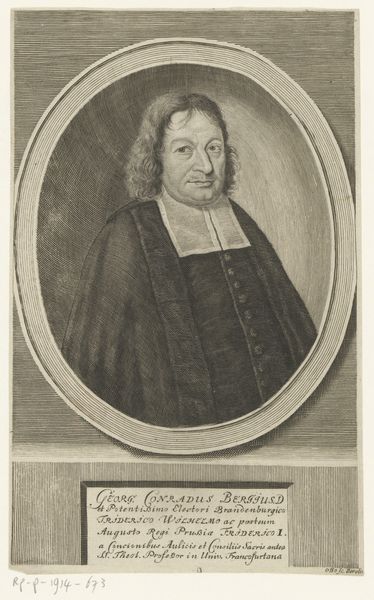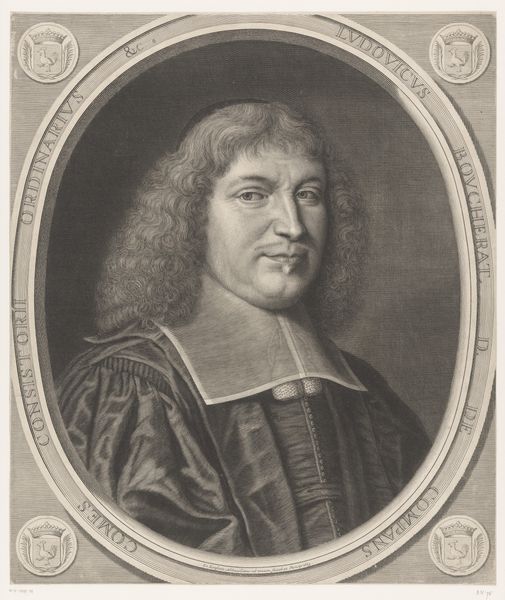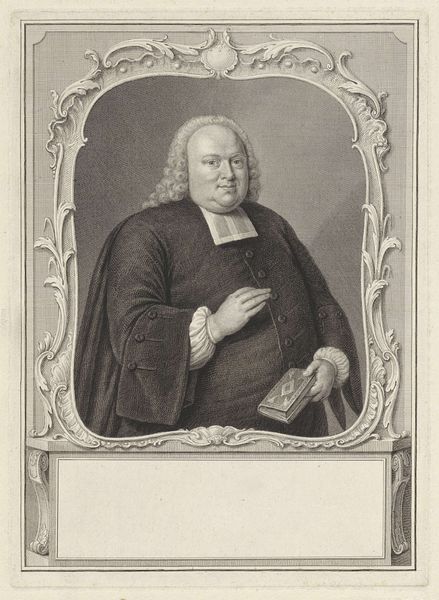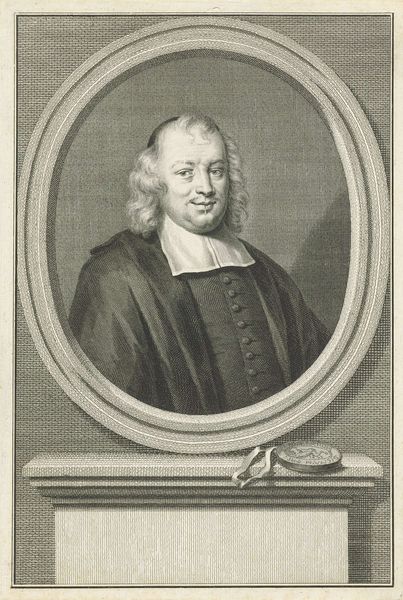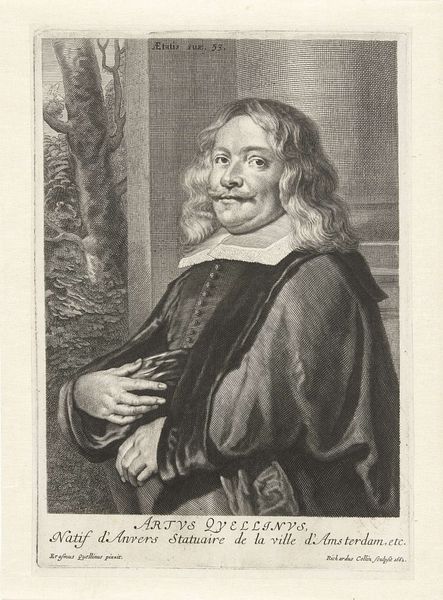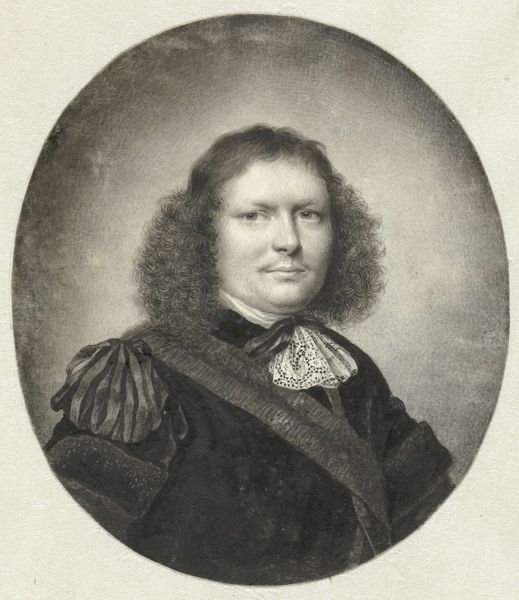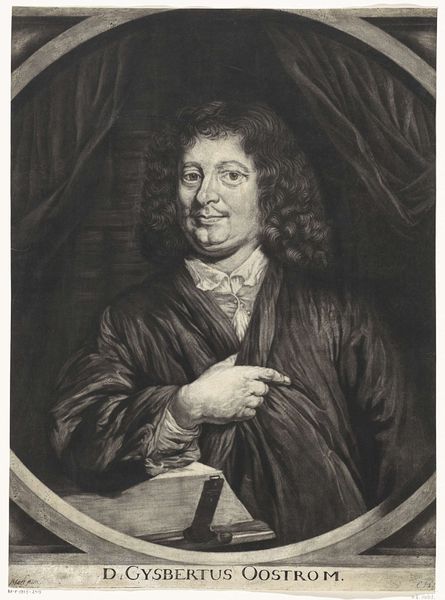![['"Portrait of Gaspar Fagel, Grand Pensionary of Holland after 1672', ' in the background is the Meeting Hall of the States of Holland at the Binnenhof in The Hague "'] by Johannes (I) Vollevens](/_next/image?url=https%3A%2F%2Fd2w8kbdekdi1gv.cloudfront.net%2FeyJidWNrZXQiOiAiYXJ0ZXJhLWltYWdlcy1idWNrZXQiLCAia2V5IjogImFydHdvcmtzLzc3ZTY0OGZiLWE3NDAtNDFlNi04ODYwLWY3OWVjNmU0ZTYzNi83N2U2NDhmYi1hNzQwLTQxZTYtODg2MC1mNzllYzZlNGU2MzZfZnVsbC5qcGciLCAiZWRpdHMiOiB7InJlc2l6ZSI6IHsid2lkdGgiOiAxOTIwLCAiaGVpZ2h0IjogMTkyMCwgImZpdCI6ICJpbnNpZGUifX19&w=3840&q=75)
['"Portrait of Gaspar Fagel, Grand Pensionary of Holland after 1672', ' in the background is the Meeting Hall of the States of Holland at the Binnenhof in The Hague "'] 1672 - 1700
0:00
0:00
oil-paint
#
portrait
#
baroque
#
dutch-golden-age
#
oil-paint
#
oil painting
#
genre-painting
#
history-painting
Dimensions: height 67 cm, width 54 cm, depth 5 cm
Copyright: Rijks Museum: Open Domain
Editor: So, here we have an oil painting entitled "Portrait of Gaspar Fagel, Grand Pensionary of Holland after 1672," created between 1672 and 1700 by Johannes Vollevens. It definitely has that formal, Baroque feel, and seems to depict someone quite important. How do you interpret this work, given the historical context? Curator: What strikes me is not just the portrayal of Fagel, but the deliberate staging of power. Consider the backdrop – the Meeting Hall of the States of Holland. It’s not merely a decorative element; it's a symbol of the Dutch Republic’s political structure and Fagel's central role within it. What does the inclusion of this location communicate, and who benefits from that narrative? Editor: It emphasizes his importance, I suppose? Almost like a visual assertion of his authority, tying him directly to the governance of Holland. Curator: Precisely! And beyond individual power, it is connected to ideas of national identity and the ongoing negotiation of Dutch power in the 17th century. It would be interesting to consider his image, considering debates around race and representation, in light of how he advances his own political agenda through his role in colonial administration, what can we ask about the legacy of his political standing? Editor: That makes me look at the portrait with new eyes, considering his presence as also representing Holland's broader policies during that time. How did Dutch art, in general, serve such purposes? Curator: It often reflected and reinforced the values and ideologies of the ruling elite. These images participated in shaping public opinion and cementing social hierarchies. Think about who this portrait was meant to address and for what aims: understanding its meaning is in analyzing the image with social context. Editor: It is fascinating to realize how portraits of the time, like Fagel's, acted as tools to mold perceptions about an individual but also a nation. Curator: Exactly! Considering art through the lenses of power and historical discourse unveils these silent yet powerful stories.
Comments
No comments
Be the first to comment and join the conversation on the ultimate creative platform.
